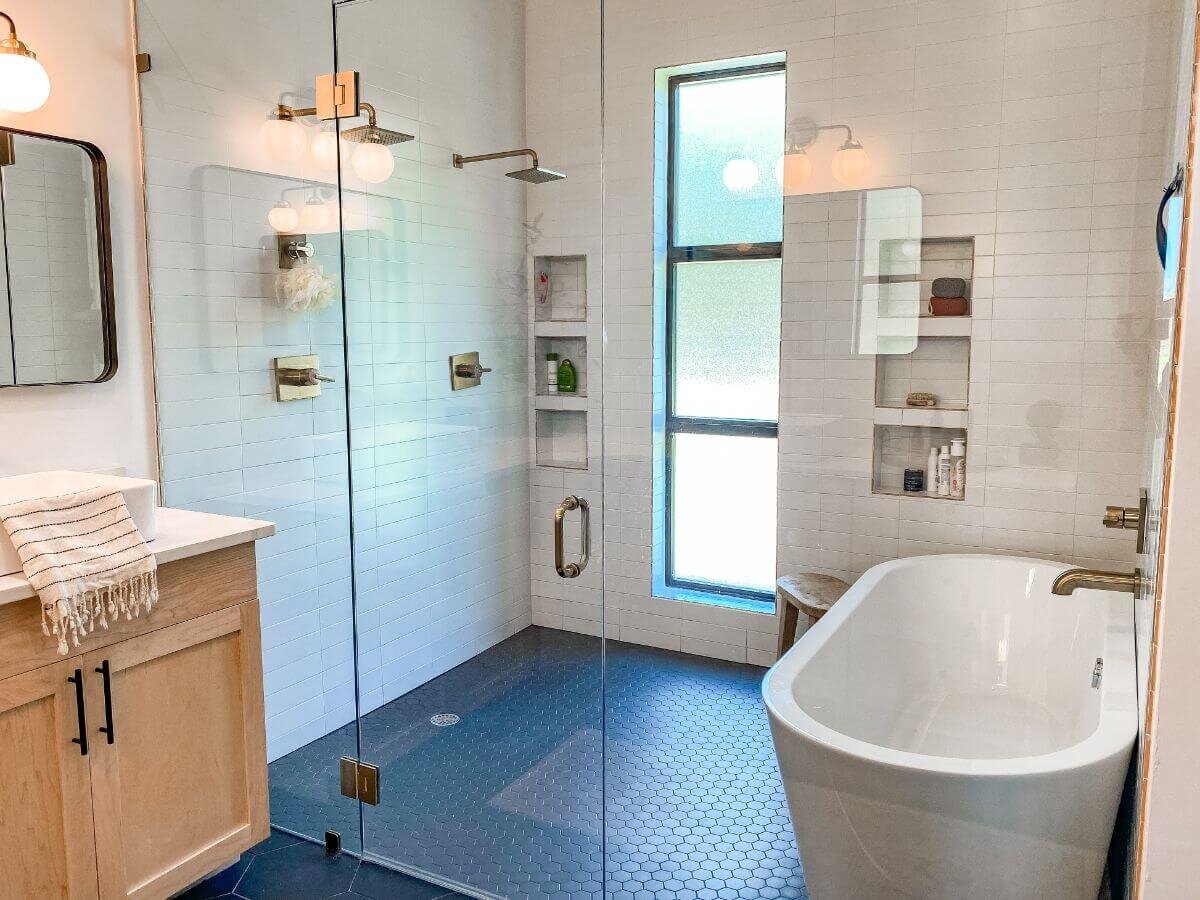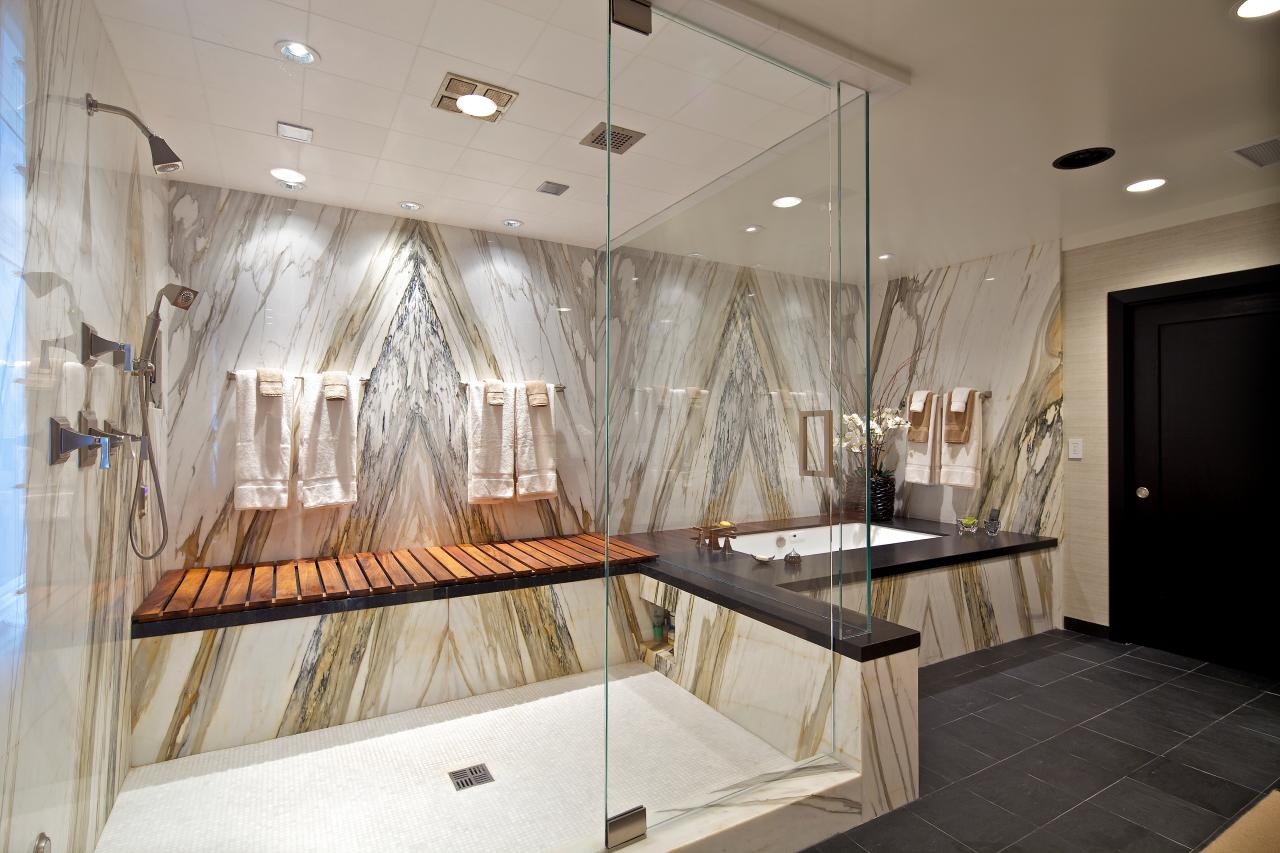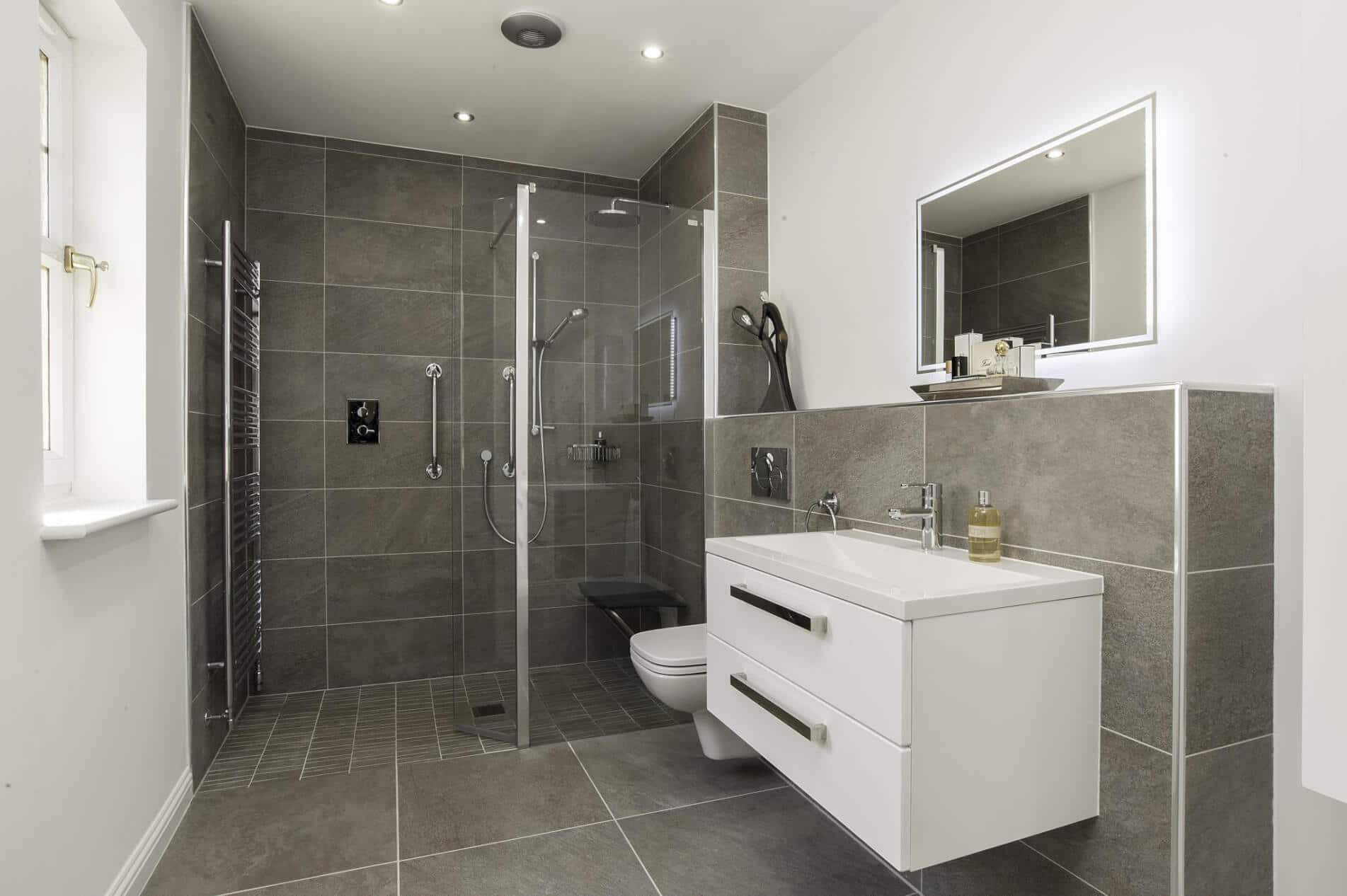Wet Room Design Essentials

A wet room bathroom offers a modern, sleek, and functional design that’s quickly gaining popularity. Its open shower area, seamlessly integrated with the rest of the bathroom, creates a spacious and minimalist aesthetic. Beyond aesthetics, wet rooms provide several practical benefits, making them an excellent choice for contemporary homes.
Benefits of a Wet Room Bathroom
Wet rooms offer a range of advantages, particularly for those seeking accessibility, space-saving solutions, and a contemporary design.
- Accessibility: Wet rooms are highly accessible, eliminating the need for a shower tray and its associated lip. This makes them ideal for individuals with mobility limitations or those using wheelchairs. The absence of a barrier allows for easier movement and reduces the risk of tripping or falling.
- Space-Saving: Wet rooms can make a small bathroom feel more spacious. By eliminating the shower enclosure, you gain valuable floor space and create a sense of openness. This is especially beneficial for compact bathrooms where every inch counts.
- Modern Aesthetics: Wet rooms offer a clean and minimalist aesthetic that complements modern interior design trends. The seamless integration of the shower area with the rest of the bathroom creates a unified and sophisticated look.
Essential Features of a Wet Room
Creating a successful wet room requires careful planning and the use of specific materials and techniques.
- Waterproof Floor: A waterproof floor is the cornerstone of any wet room. The floor must be completely sealed to prevent water from seeping into the subfloor and causing damage. This is typically achieved using a combination of a waterproof membrane and a suitable flooring material.
- Drainage System: A robust drainage system is essential for effectively removing water from the wet room. A floor drain, usually positioned in a discreet location, collects and channels water away, ensuring a dry and safe environment.
- Appropriate Materials: Choosing the right materials is crucial for a successful wet room. Materials should be waterproof, durable, and resistant to moisture damage. Common choices include:
Types of Wet Room Floors
Choosing the right flooring for your wet room is essential for both functionality and aesthetics. Here’s a breakdown of popular options:
| Floor Type | Advantages | Disadvantages |
|---|---|---|
| Tiles | Durable, water-resistant, wide range of styles and colors, easy to clean | Can be cold underfoot, grout lines can trap dirt and require regular cleaning |
| Resin | Seamless, waterproof, easy to clean, available in various colors and finishes | Can be expensive, may require professional installation |
| Concrete | Durable, cost-effective, can be customized with different finishes | Requires careful sealing to prevent water damage, can be difficult to repair |
Wet Room Layout and Functionality: Wet Room Bathroom Ideas

The layout of your wet room is crucial to its functionality and overall appeal. It determines how you move around the space, how you use the different areas, and how the room feels. There are many different wet room layouts to choose from, each with its own advantages and disadvantages.
Wet Room Layout Options, Wet room bathroom ideas
Different wet room layouts cater to various needs and preferences. Some common options include:
- Walk-in Showers: These are the most popular wet room layout, offering easy access and a spacious feel. A walk-in shower typically features a large, open shower area with a low threshold or no threshold at all. They are perfect for people with mobility issues or those who simply prefer a more accessible showering experience.
- Corner Showers: This layout maximizes space by utilizing a corner of the bathroom. Corner showers are ideal for smaller bathrooms or when you want to create a distinct showering area. They can be designed with various configurations, including a single-sided showerhead or a multi-jet shower experience.
- Multi-functional Spaces: A wet room can be more than just a shower area. You can incorporate a vanity unit, a seating area, or even a bathtub into the wet room design. This creates a multi-functional space that is both stylish and practical.
Maximizing Space and Functionality
- Storage Solutions: Wet rooms can be designed with built-in storage solutions to keep your bathroom organized and clutter-free. These can include recessed shelves, niches, and cabinets that blend seamlessly into the wet room design. You can also utilize storage solutions like floating shelves or wall-mounted baskets for towels, toiletries, and other essentials.
- Seating Areas: A seating area in your wet room can be a luxurious addition. Consider a built-in bench or a freestanding stool that provides a comfortable place to sit while showering or getting ready. This is particularly beneficial for people with mobility issues or those who simply prefer a more relaxing showering experience.
- Vanity Units: A vanity unit with a sink can be a practical addition to a wet room. It allows you to wash your hands and face without having to leave the wet room. Choose a vanity unit that is waterproof and resistant to moisture to ensure its longevity.
Wet Room Layout with Integrated Storage Solutions
Imagine a wet room with a walk-in shower on one side and a vanity unit with a sink on the other. The shower area features a recessed niche for storing shampoo and body wash, while the vanity unit has built-in drawers for towels and other bathroom essentials. The shower area is separated from the vanity unit by a glass partition, creating a clear separation of wet and dry zones. This layout maximizes space and functionality, offering both a luxurious showering experience and a practical storage solution.
Wet Room Materials and Finishes

Choosing the right materials and finishes for your wet room is crucial to ensure both functionality and aesthetics. The materials must be waterproof, durable, and easy to maintain, while the finishes should complement your overall design vision.
Wet Room Wall Materials
The walls of a wet room need to be completely waterproof to prevent moisture damage. The most common materials used for wet room walls include:
- Waterproof plasterboard: This is a popular choice for wet room walls as it is relatively inexpensive and easy to install. Waterproof plasterboard has a special coating that makes it resistant to moisture. It is often used in conjunction with a waterproof membrane and tiling to create a fully waterproof wall.
- Tiling: Tiling is a popular choice for wet room walls because it is durable, waterproof, and easy to clean. Tiles can be made from a variety of materials, such as ceramic, porcelain, or natural stone. When choosing tiles for a wet room, it is important to select tiles that are specifically designed for wet areas. These tiles will have a low water absorption rate and a slip-resistant surface.
- Waterproof paint: Waterproof paint can be used to create a seamless and watertight finish on wet room walls. It is important to choose a paint that is specifically designed for wet areas, as this will ensure that it is resistant to moisture and mildew.
Wet Room Floor Materials
The floor of a wet room must be waterproof, slip-resistant, and durable. Some popular options for wet room floors include:
- Tiling: Tiling is a popular choice for wet room floors because it is durable, waterproof, and easy to clean. Tiles can be made from a variety of materials, such as ceramic, porcelain, or natural stone. When choosing tiles for a wet room floor, it is important to select tiles that are specifically designed for wet areas. These tiles will have a low water absorption rate and a slip-resistant surface. Large format tiles are particularly popular for wet rooms, as they create a sleek and modern look.
- Resin flooring: Resin flooring is a popular choice for wet rooms because it is seamless, waterproof, and easy to clean. It is also available in a wide range of colors and finishes. Resin flooring is a good choice for wet rooms that are prone to spills or splashes, as it is very durable and resistant to stains.
- Natural stone: Natural stone is a luxurious and elegant choice for wet room floors. However, it is important to choose a type of stone that is suitable for wet areas. Some popular choices include slate, limestone, and granite. Natural stone can be slippery when wet, so it is important to choose a stone with a slip-resistant finish.
Wet Room Ceiling Materials
The ceiling of a wet room needs to be waterproof and moisture-resistant. The most common materials used for wet room ceilings include:
- Waterproof plasterboard: Waterproof plasterboard is a popular choice for wet room ceilings, as it is relatively inexpensive and easy to install. It is often used in conjunction with a waterproof membrane and a sealant to create a fully waterproof ceiling.
- Tiling: Tiling can also be used for wet room ceilings. It is a durable and waterproof option, but it can be more expensive than waterproof plasterboard. When choosing tiles for a wet room ceiling, it is important to select tiles that are specifically designed for wet areas. These tiles will have a low water absorption rate and a slip-resistant surface.
Wet Room Finishes: A Comparison
| Finish | Durability | Maintenance | Aesthetic Appeal |
|---|---|---|---|
| Ceramic tiles | High | Low | Versatile |
| Porcelain tiles | Very high | Low | Elegant |
| Natural stone | High | Moderate | Luxurious |
| Resin flooring | Very high | Low | Modern |
Wet room bathroom ideas offer a modern, sleek aesthetic and seamless accessibility, but they can also present unique storage challenges. To maximize your space, consider implementing smart bathroom closet organization ideas , such as vertical storage solutions and tiered shelves.
This will help you keep your wet room tidy and functional, allowing you to fully enjoy its spacious and contemporary feel.
Wet room bathroom ideas offer a sleek, modern look, and a key element to consider is the faucet. A sleek chrome finish can complement the minimalist aesthetic, and a Pfister chrome bathroom faucet offers both style and functionality. These faucets often feature contemporary designs, making them ideal for creating a seamless and stylish wet room experience.